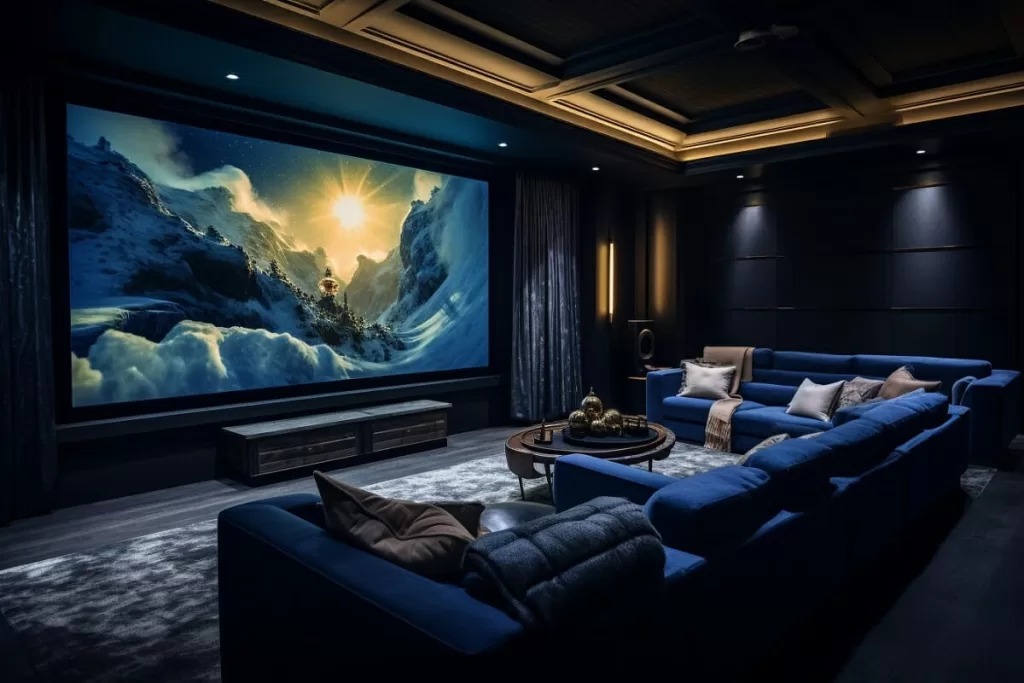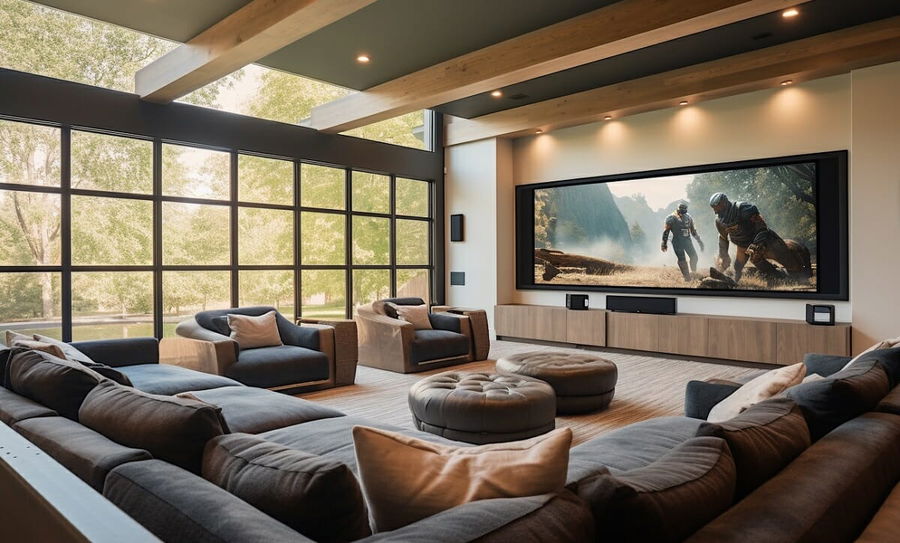Home Theater 101: Everything You Required to Know for a Cinematic Experience in your home
Creating a home movie theater that matches the motion picture experience of a commercial theatre entails cautious factor to consider of multiple components, consisting of screen option, sound systems, and space format. Each element plays an essential duty in achieving the preferred atmosphere and capability. Whether you are pondering the optimal display dimension or the intricacies of surround noise, comprehending these principles is essential. As we check out these essential parts, it becomes apparent that the choices made can dramatically impact your overall watching experience, leaving one to consider just how these choices will form your individual movie theater.
Choosing the Right Screen
When setting up a home movie theater, picking the right display can make or break the seeing experience - home theater installation tampa. The screen offers as the focal point of your configuration, influencing photo quality, seeing angles, and total visual. Key elements to consider consist of screen dimension, resolution, and type
First, determine the appropriate screen dimension based on your room measurements and seating distance. Next off, pick in between different screen kinds, such as fixed-frame, motorized, or retracting screens, each offering distinct benefits.
Resolution is an additional important factor. For an absolutely immersive experience, consider a display created for 4K and even 8K content, guaranteeing sharpness and clearness. Additionally, consider the screen's gain, which influences illumination and comparison; a greater gain can enhance brightness in well-lit areas, while a reduced gain might be better for darker atmospheres.
Picking Sound Equipment
Audio tools is an essential component of any type of home cinema system, dramatically boosting the general watching experience. The selection of audio gear can figure out the depth, clarity, and immersion of audio, important for developing a motion picture environment.
When picking audio tools, take into consideration a border sound system, which typically includes a receiver, multiple audio speakers, and a subwoofer. A 5.1 or 7.1 channel system is recommended, where the first number represents the speakers and the second the speaker, supplying an immersive soundscape. The receiver is the heart of the system, managing audio and video clip signals, and should sustain modern-day layouts like Dolby Atmos for a boosted spatial experience.
Quality audio speakers are necessary; appearance for versions that use a balanced sound profile with excellent bass response. Floor-standing speakers can produce richer sound, while shelf choices conserve area. Furthermore, consider cordless choices for simplicity of setup, although wired systems often supply superior performance.

Optimum Seating Plans
Producing an optimal home theater experience pivots significantly on optimal seating setups. The setup of seats plays a vital role in both convenience and watching top quality, directly impacting the overall motion picture experience.
First, take into consideration the display size and watching range. A common guideline is to place seats at a range roughly 1.5 to 2.5 times the angled size of the screen. This guarantees an immersive experience without straining the eyes.
Next, elevation is essential. If your seating remains in a tiered style, the back rows ought to be more than the front to stay clear of blockages. For level seating, make certain that the front row is not as well near to the display, and that every person has a clear line of sight.
Moreover, think about the setup in terms of social dynamics. Team seating can enhance the common experience, while individual seats might be liked for personal watching.

Lastly, prioritize comfort with ergonomic seats that supports prolonged viewing durations. Integrating reclining chairs or cushioned seats can dramatically improve the experience, making the home cinema a preferred location for both entertainment and leisure.
Lighting and Atmosphere
Efficient illumination and ambiance are necessary parts of a well-designed home movie theater, as they substantially influence the watching experience. The right illumination can enhance the cinematic feeling, while inadequate choices can diminish it. For ideal outcomes, think about a layered lights strategy that consists of ambient, task, and accent illumination.
Ambient lighting provides basic illumination, ensuring that the area is not entirely dark, which can stress the eyes. Dimmer buttons are very recommended, enabling adjustments based upon the content being seen. Task illumination, such as wall sconces or flooring lamps, supplies useful lighting for activities like reading or browsing the area without interfering with the total ambience.
Accent lighting can be utilized to highlight architectural functions or develop focal points, including depth and rate of interest to the room. LED strip lights behind displays or along shelves can provide a subtle glow that enhances the aesthetic experience without frustrating the visitor.

Wiring and Installation Tips
A well-planned electrical wiring arrangement is essential for attaining optimal efficiency in your house movie theater system. Proper circuitry not just makes certain top notch audio and video clip signals however likewise improves the overall visual of your space. Begin by mapping out your format, identifying where each element will be positioned, look at here including your screen, speakers, and receiver.
When picking cable televisions, focus on top notch, suitably assessed electrical wiring to decrease signal loss. HDMI cords need to be used for video clip links, while speaker cable need This Site to match the requirements of your speakers and amplifier. Opt for in-wall ranked cords to abide by safety and security standards and preserve a clean look.

Conclusion
In summary, creating an exceptional home theater experience requires careful factor to consider of various elements, including screen selection, audio devices, seating arrangements, illumination, and electrical wiring. By focusing on these elements, a motion picture ambience can be efficiently reproduced, enabling for immersive viewing experiences that match conventional cinema settings.
Producing a home movie theater that rivals the motion picture experience of a commercial theatre includes careful consideration of numerous parts, including display choice, audio systems, and room design.When establishing up a home theater, picking the appropriate display can make or break the seeing experience. Next off, pick in between different screen types, such as fixed-frame, motorized, or retractable screens, each offering distinct benefits. For an absolutely immersive experience, consider a screen developed for 4K or even 8K web content, find out this here making certain intensity and clarity.In recap, developing a phenomenal home movie theater experience needs cautious consideration of various components, consisting of screen option, audio tools, seating plans, lighting, and circuitry.